195 years ago today, Spain sold Florida to the United States as part of the Adams-Onis Treaty. It settled a standing border dispute between the two countries and was considered a triumph of American diplomacy. The cost was equivalent to $537.8 million in today’s dollars priced in gold, but was just 5 million Spanish dollars at the time. Spain had long rejected repeated American efforts to purchase Florida. But by 1818, Spain was facing a troubling colonial situation in which the cession of Florida made sense. READ how it happened… (1819)
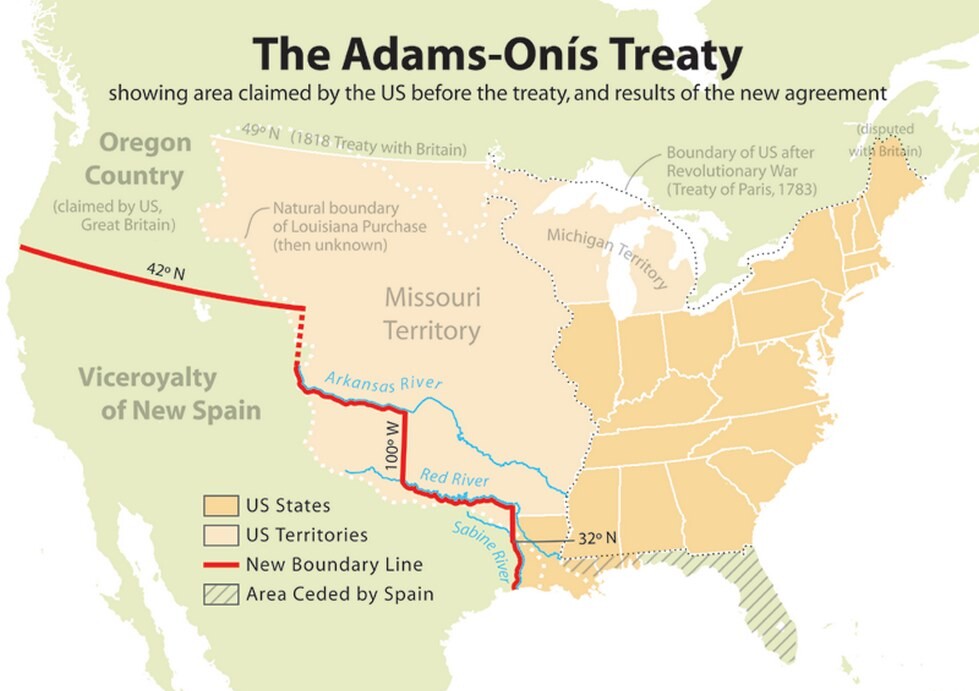
With minor military presence in Florida, Spain was not able to restrain the Seminole warriors who routinely crossed the border and raided American villages and farms. Meanwhile, the Spanish were mostly concerned with their territorial possessions in “New Spain” i.e. Mexico, Texas, and everything northwest of that.
Under Article 15 of the treaty, Spanish goods received exclusive most-favored-nation privileges in the ports at Pensacola and St. Augustine for twelve years, while under Article 2, the U.S. received ownership of Spanish Florida. Under Article 3, the U.S. relinquished its own claims on parts of Texas west of the Sabine River and other Spanish areas, satisfying both parties and allowing the Sunshine State to become the 27th star on the flag.
MORE Good News on this Date:
- George Washington, the first U.S. president and influential Commander-in-Chief of the Continental Army in the American Revolution, was born in Virginia (1732)
- Tennessee adopted a new constitution that abolished slavery (1865)
- The Norwegian figure skater (and film star) Sonja Henie followed up her Winter Olympics gold medal with an incredible 10th consecutive victory at the women’s World Figure Skating Championships in Paris (1936)
- Barbara Jo Rubin became the first woman to win a U.S. thoroughbred horse race (1969)
- China and the US agreed to establish diplomatic liaison offices (1973)
- Start of the People Power Revolution in the Philippines (1986)
75 years ago today, Andreas Nikolaus Lauda, the famous 3x Formula One World Driver’s champion, was born in Vienna. He’s best known for his wins with McLaren and Ferrari, as well as his fierce rivalry with British driver James Hunt. So desperate was Lauda to get into professional racing he took out a £30,000 bank loan with his life insurance as collateral to buy his way into March Engineering’s Formula Two team. His gamble paid off, and he was quickly promoted to March’s Formula One team in 1972.
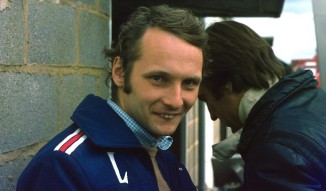
In 1975, Lauda won his first Formula One championships, with first-place finishes in the Monaco, Belgian, Swedish, French, and US Grand Prix.
In 1976 Lauda was involved in a terrible collision in his Ferrari that caused him to suffer severe burns and inhale toxic gases, which left him nearly dead and years of intensive rehab. However, just 6 weeks later he appeared at a press conference for the Monza Grand Prix with bandages still covering his burns, explaining he was ready.
In Lauda’s absence, rival James Hunt had mounted a late charge to reduce Lauda’s lead in the World Championship standings. Hunt and Lauda were friends away from the circuit, and their personal on-track rivalry, while intense, was cleanly contested and fair. Following wins in the Canadian and United States Grands Prix, Hunt stood only three points behind Lauda before the final race of the season, the Japanese Grand Prix.
On race day there was torrential rain and Lauda retired after two laps. He later said that he felt it was unsafe to continue under these conditions, especially since his eyes were watering excessively because of his fire-damaged tear ducts and inability to blink. Hunt led much of the race before his tires blistered and a pit stop dropped him down the order. He recovered to third, thus winning the title by a single point.
Lauda would return to racing in 1982 to win two more World Driver’s Championships, leaving behind a legacy as one of the greatest drivers Europe had ever produced. (1949)
62 years ago today, “The Crocodile Hunter” Steven Robert Irwin, was born in Victoria, Australia. The most famous televised animal conservationist, barring perhaps only Jane Goodall, Irwin achieved worldwide fame from the television series The Crocodile Hunter (1996–2007), an internationally broadcast wildlife documentary series that he co-hosted with his wife Terri. The couple also hosted the series Croc Files (1999–2001) and The Crocodile Hunter Diaries (2002–2006). For millennials, he became a symbol of adventure, Australia, and conservation, and his no-holds-barred use of Australian colloquialisms like “chuck-a-block” and “crikey” endeared him to the world in a way no other T.V. presenter could.
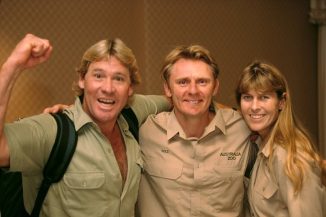
While television brought him fame and fortune, he always saw conservation as his highest priority. “I consider myself a wildlife warrior. My mission is to save the world’s endangered species,” Irwin said. He bought “large tracts of land” in Australia, Vanuatu, Fiji, and the United States. One, a property called Mourachan, is 117,000 acres and contains some of the rarest habitats in Australia.
One of his most unique abilities was to communicate the value of species that weren’t cute and cuddly. “Humanity will not protect that which we fear or do not understand. Steve Irwin helped us understand those things that many people thought were a nuisance at best and horror at worst. That made him a great educator and conservationist,” said Canadian environmentalist David Suzuki.
At the age of 44, while filming a documentary about the Great Barrier Reef, Irwin’s heart was pierced by a short-tail stingray. His death was a shock, as his television career had seen him break bones while wrestling with crocodiles, and come up close and personal with hundreds of lethal animals. The televised funeral was broadcast with the tagline, “he changed our world,” which was certainly true. (1962)
146 years ago today, Frank Woolworth opened the first of many 5-and-10-cent stores in Utica, New York.
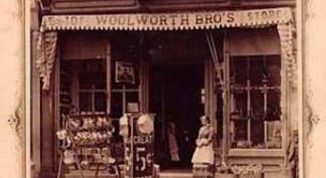
His F. W. Woolworth Company was arguably the most successful American–and international—five-and-dime business, setting trends and creating the modern retail model, still followed worldwide today. Retail chains using the Woolworth name survive in Austria, Germany, Mexico, and, until early 2009, the UK—with a copycat in Australia. (1878)
240 years ago today, the first American ship to trade with China, Empress of China, set its sails from New York harbor.
The three-masted, square-rigged sailing ship also known as Chinese Queen, was the first American merchant vessel to enter Chinese waters from the newly independent United States, opening trade with the Qing Empire. The 360-ton vessel also transported the first official representative of the American government to Canton. 37 years ago, China minted a silver 5-yuan to commemorate the voyage of the Empress.
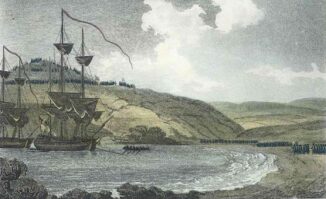
The Empress returned to New York on May 11, 1785 after a round-trip voyage of almost 15 months. Its syndicate of owners, including Robert Morris, were some of the richest men in the new nation. President Washington bought a set of Chinese porcelain tableware from them—and the venture’s success encouraged others to invest in further trading with China. (1784)
44 years ago today, in a stunning upset, the U.S. Olympic hockey team consisting of amateurs and college students, defeated the long-dominant and heavily-favored Soviet Union team, 4-to-3, on home ice, in Lake Placid, New York. This underdog’s victory over a hockey juggernaut, which later led to an American gold medal, was dubbed the ‘Miracle on Ice,’ and was voted the greatest sports moment of the twentieth century by Sports Illustrated.
Of the 20 players on Team USA, 13 eventually played in the NHL—but six of the Soviet Olympic athletes also joined NHL clubs, including Viacheslav Fetisov, who became a teammate of American Mike Ramsey on the 1995 Detroit Red Wings team that played in the Stanley Cup Final. WATCH the crowd go wild and hear the commentary in this ABC anniversary tribute… (1980)
SHARE The Milestones, Memories, and Music…



















